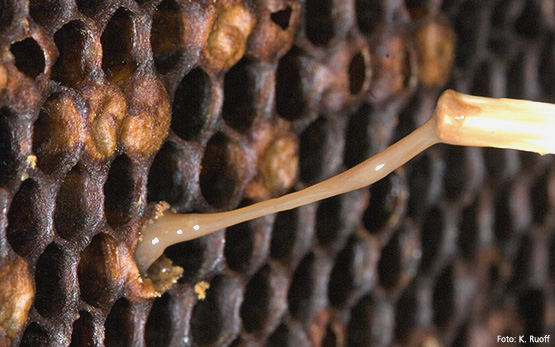American foul brood is caused by the Paenibacillus larvae bacterium. The bacterium forms highly resistant spores, through which it spreads in the environment. The spores remain infectious over several years, or even decades. Only the spores, and not the vegetative form of the bacterium are infectious during the first 48 hours of the larval stage. It has been proven that the larvae are infected by the larval jelly. Once the spores germinate in the intestine of the larvae, the bacteria produce enzymes and toxins that help them penetrate the cell walls and enter the blood of the larvae, where they lethally weaken the latter. The adult bees do not become infected, but may serve as vectors of the disease. There are different strains of Paenibacillus larvae with different virulence. Detailed information on the biology and diagnosis of American foul brood can be found in our Guide to Bee Health.






